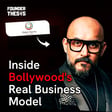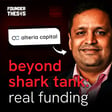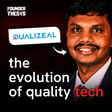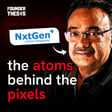
The EV revolution is here, can EMO Energy be the next BP/ HPCL/ IOCL? | Sheetanshu Tyagi(Co-founder)
"Energy is the only input cost that can be systematically optimized over time."
A game-changing perspective from battery tech pioneer Sheetanshu Tyagi that's reshaping how India's quick-commerce giants think about profitability. This insight is driving EMO Energy's transformation from a hardware company to an Energy-as-a-Service platform.
Sheetanshu Tyagi is the Co-Founder & CEO of EMO Energy, a deep-tech startup revolutionizing India's EV battery landscape. With over a decade of experience at world-class companies including Rivian (as one of the first 50 employees), Ather Energy, and Ola Electric, Sheetanshu has been at the forefront of the global EV revolution. He holds 8 patents for innovative automotive systems and has successfully raised $7.86 million for EMO Energy, achieving a valuation of ₹203 crores. Under his leadership, EMO has deployed over 2,000 battery packs, covered 18.3 million kilometers, and established partnerships with industry giants like Blinkit, BigBasket, and Domino's.
Host Akshay Datt explores Sheetanshu's journey from a 2BHK startup to building India's most advanced battery technology platform.
Key Insights from the Conversation:
👉Hardware-First Philosophy: EMO's contrarian approach focuses on superior mechanical and thermal engineering rather than expensive specialized cells
👉Fast Charging Breakthrough: 20-minute charging capability with 5+ year battery life, solving the critical downtime problem for commercial fleets
👉Immersion Cooling Innovation: Proprietary liquid cooling technology maintains uniform temperature within 1°C across all cells
👉Energy-as-a-Service Model: Transitioning from 90% hardware revenue to 50%+ software and services, offering systematic energy cost optimization
👉Strategic Market Focus: Targeting high-utilization commercial fleets rather than consumer market, doubling rider productivity to 140-160 km/day
👉Sodium-Ion Future: Predicting India's potential to bypass lithium dependency and build sovereign battery technology using locally available materials
#EVBattery #StartupIndia #DeepTech #ElectricVehicles #BatteryTechnology #EnergyStorage #Entrepreneurship #TechStartup #Innovation #FastCharging #EMOEnergy #IndianStartups #CleanTech #SustainableMobility #VentureCapital #HardwareTech #EVInfrastructure #BengaluruStartups #FutureOfMobility #StartupJourney #TechFounder #electricmobility
Disclaimer: The views expressed are those of the speaker, not necessarily the channel



















